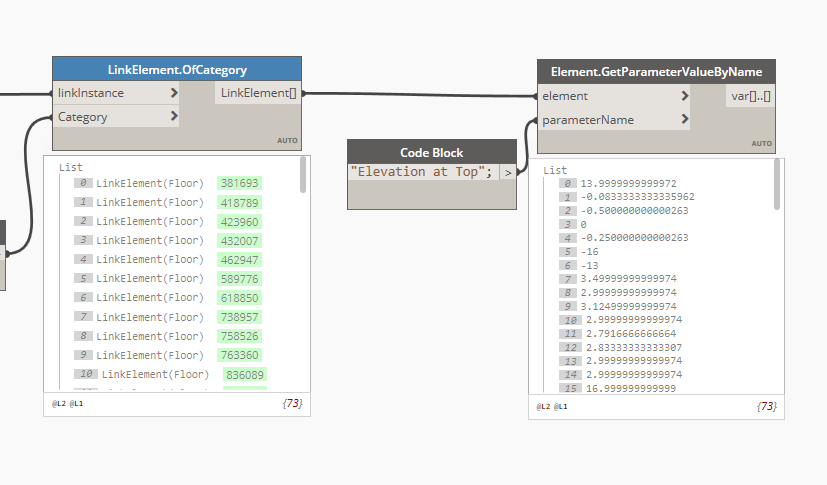Hello everybody.
I’m developing a routine to check the project’s duct height.
I check the floor of the linked file and check the height of each one in relation to the floor.
If it’s less than 2.00 meters, it shows the ID.
But I can’t think of a way to do this check, would anyone know to let me know?
test.dyn (25.7 KB)
1 Like
1. Are you assuming all flat duct - Do you care if a duct is sloped?
- good note, i go to include in getparametervaluebyname the lower elevation to choose the worst case of each
2. How do you envision this graph responding to vertical ductwork i.e. ducts in shafts?
- Great note, i’m going to do a vector.isparallel in filterbyboolmask to remove them
3. For the linked floors you may want to take the geometry instead of the location and grab the surface that represents top of your flooring assembly.
- hmm nice, how can i proceed from this idea?
4. Keep in mind that GetLocation retrieves the draw line of the duct, not necessarily the bottom-of-duct dimension.
- thanks for this, do you think using getparametervaluebyname the lower elevation for each can be an output?
Actually, before going down the rabbit hole of geometry manipulation, what about the built-in parameters?
2 Likes
Element.BoundingBox into BoundingBox.MidPoint might also help here. From there pull the Z point and compare that to the level (or floor’s) elevation via subtraction.
This should account for flanges and the like as well. Note that the bounding box may not work well on some duct connections - so check carefully.
2 Likes
Thanks for the tip @Robert_Younger ober
In my case it didn’t work, “Elevation at Top” isn’t a parameter for these floors, but using a boundingbox as mentioned above, I think it go to work
Thanks for the idea @jacob.small
I believe I got a good path using the boundingbox, the subtraction wasn’t quite right (since I couldn’t subtract each duct with its respective floor), but using only the elevation I think its will work
1 Like
Careful on the 'MidPoint aspect - tha’t’s going to pull the point at the center of the overall volume, rather than the MinPoint, which would pull the lowest point of the geometry.

2 Likes


